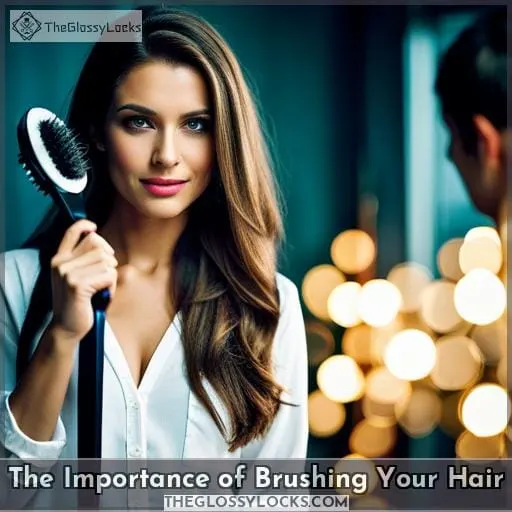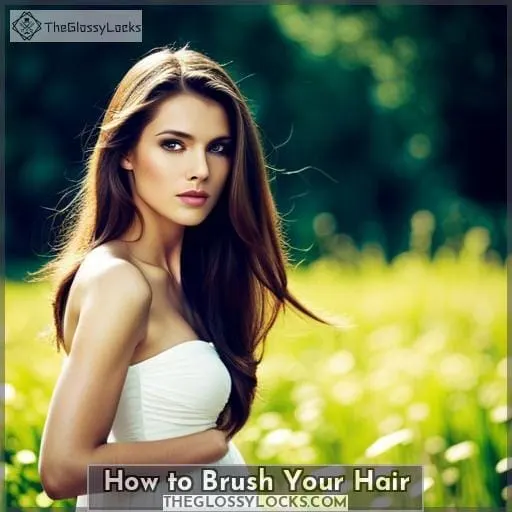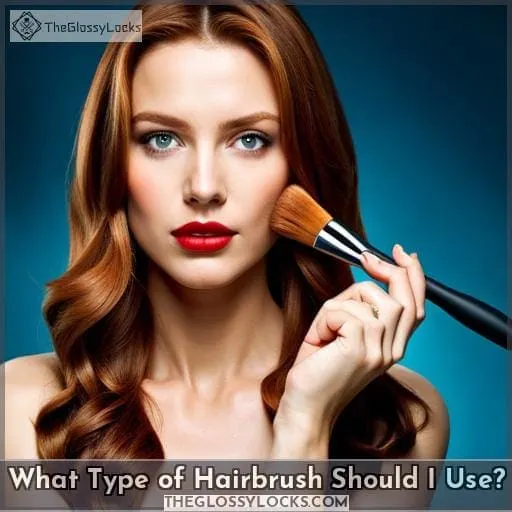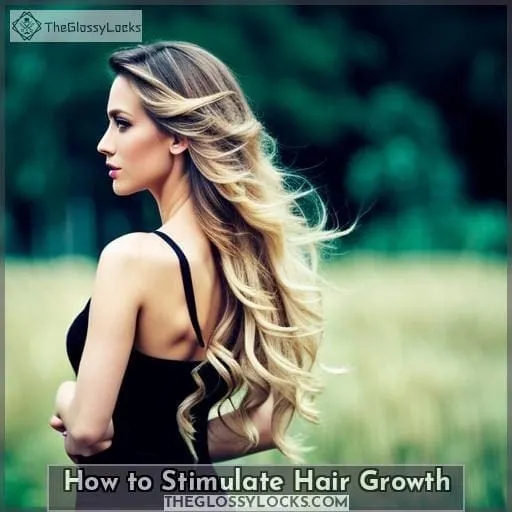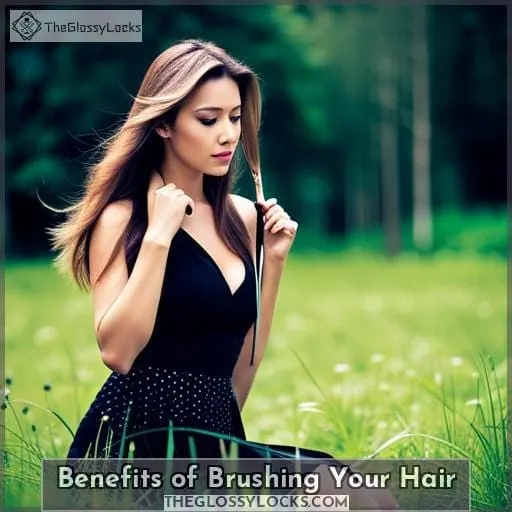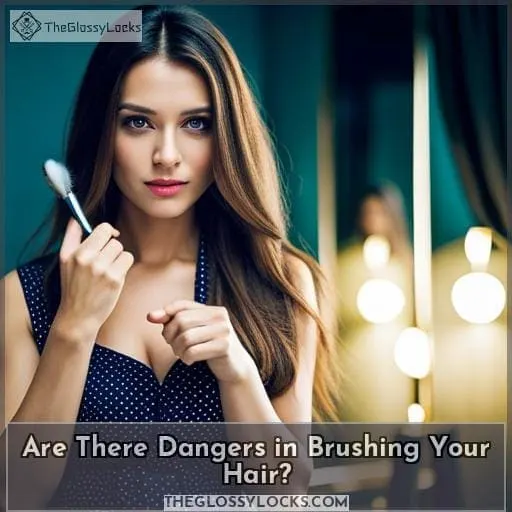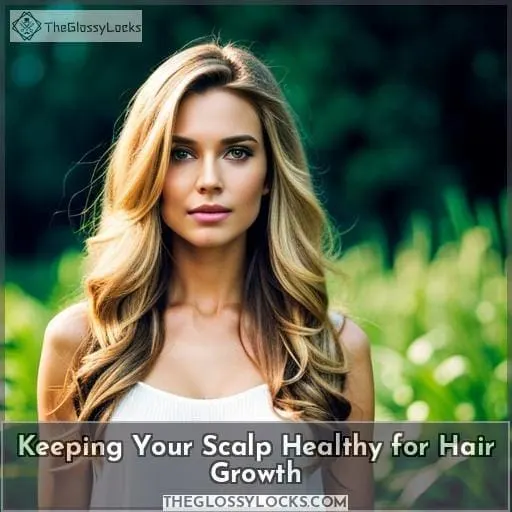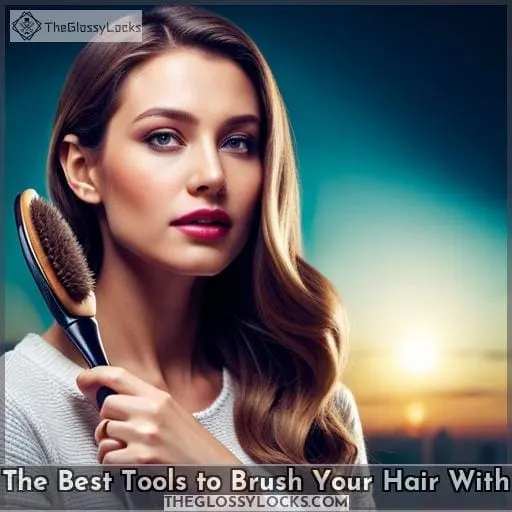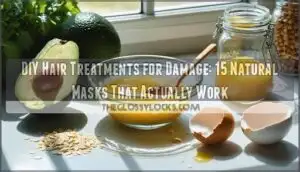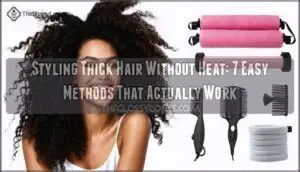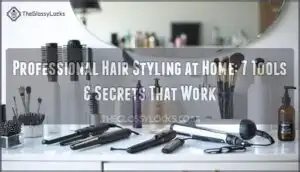This site is supported by our readers. We may earn a commission, at no cost to you, if you purchase through links.
Are you looking for ways to get healthier, shinier hair? If so, then you may have heard the suggestion that regularly brushing your hair can help promote growth.
In this article, we look at whether or not there is any truth behind this myth and discuss how else one might go about promoting healthy hair. We cover everything from which type of brush you should be using to tips on keeping your scalp in good condition for optimal results.
Table Of Contents
- Key Takeaways
- The Importance of Brushing Your Hair
- How to Brush Your Hair
- What Type of Hairbrush Should I Use?
- How to Stimulate Hair Growth
- Benefits of Brushing Your Hair
- Are There Dangers in Brushing Your Hair?
- Keeping Your Scalp Healthy for Hair Growth
- The Best Tools to Brush Your Hair With
- Frequently Asked Questions (FAQs)
- How often should I brush my hair to stimulate growth?
- Is there a particular type of brush or technique that is more beneficial for stimulating hair growth?
- Is brushing my hair more beneficial than using other hair care products?
- Are there any special precautions I should take when brushing my hair to stimulate growth?
- Are there any natural remedies I can use to stimulate hair growth in addition to brushing my hair?
- Conclusion
Key Takeaways
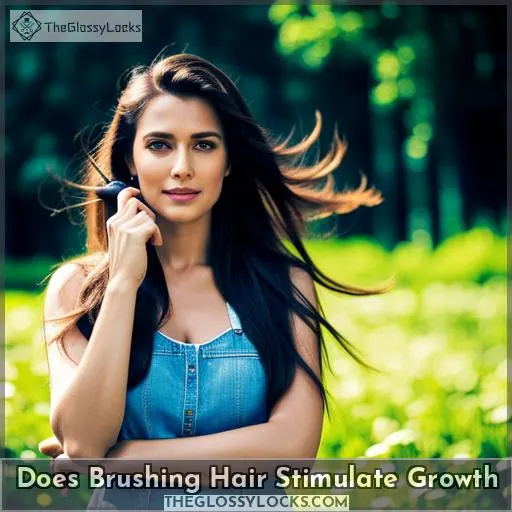
- Regular brushing stimulates blood circulation in the scalp, promoting hair growth.
- Using the right brush for your hair type, such as boar bristle brushes for fine-to-medium textures and wide-tooth combs for thicker curls or kinks, can help stimulate growth.
- Incorporating natural oils and nourishing treatments into your brushing routine can provide extra nourishment to the hair and scalp, promoting growth.
- Maintaining scalp health through a good diet, regular washing, and scalp massages can also contribute to healthy hair growth.
The Importance of Brushing Your Hair
Regularly running a brush through your locks can help you maintain strong, healthy, and beautiful hair. Careful brushing techniques are key. Start at the ends of your strands and work up to the roots. Be sure to use a gentle touch when brushing, as this will reduce split ends and heat damage caused by styling tools.
Additionally, scalp massages while combing or brushing can stimulate increased blood flow. This may result in stronger follicles that support healthier growth over time. Depending on hair type and texture, different brushes should be used for optimal results.
Boar bristle brushes are best suited for fine-to-medium textures, whereas wooden wide tooth combs work well with thicker curls or kinks.
Brushing not only keeps tresses looking their sleekest but also helps keep them healthy. This is important in order to grow longer without breakage along the way! Ultimately, it’s important to take care of our manes no matter what texture they have.
Careful detangling with regular scalp massages is proven beneficial when trying to combat the dilemma of whether brushing hair stimulates growth.
How to Brush Your Hair
Gently combing your strands from the bottom up and giving yourself a scalp massage can help keep your locks looking strong and healthy.
- Trim ends regularly to help reduce split ends and control frizz.
- Avoid heat styling as much as possible to prevent damage to hair follicles.
- Use boar bristle brushes or wooden wide-tooth combs, depending on your hair texture.
- Vent brushes work well for maintaining volume when blow-drying.
When done correctly, brushing is an important step in preserving good hair health! It’s essential for promoting growth while minimizing breakage. Taking extra time with this routine will lead to healthier-looking manes with more strength over time.
What Type of Hairbrush Should I Use?
Choosing the right hairbrush for your individual needs is key to keeping your locks looking strong and healthy! Natural bristles are best as they don’t pull at the scalp or create excess friction, which can cause damage.
The handle length should be comfortable so you have control over it, while also being able to reach all sections of the head.
Depending on your hair texture, boar bristle brushes or wooden wide-tooth combs are great for detangling knots without yanking out too many strands.
A scalp massage with a brush will stimulate blood circulation in this area, thereby promoting growth alongside improving the overall healthiness of follicles down below.
How to Stimulate Hair Growth
Invigorating your scalp with the right kind of brush can help bring out your natural beauty and give you a more luscious mane.
- Incorporate natural oils into your routine to keep strands hydrated and nourished.
- Schedule regular trims to prevent split ends from damaging follicles at the root.
- Give yourself a scalp massage with an appropriate brush for increased blood flow in this area – promoting healthy hairs!
- Eat foods rich in biotin, iron, zinc, and omega fatty acids; they will also do wonders for keeping locks lush and strong.
- Avoid heat styling as much as possible; it can dry out tresses, making them brittle or prone to breakage over time.
So take some extra care when brushing those gorgeous locks of yours – it’s worth investing that bit of effort each day if you want longer-lasting results! Pamper yourself regularly by treating not only just the surface but really getting deep down into those roots too; this way, you’ll be sure to have shiny, healthy-looking hair all year round!
Benefits of Brushing Your Hair
Regularly running a brush through your tresses can provide numerous benefits beyond giving you a shiny and put-together look. Not only does brushing help distribute the natural oils from your scalp down to the ends of your hair, but it also promotes blood circulation in the scalp, which can stimulate hair growth.
Additionally, brushing helps exfoliate the scalp by removing dead skin cells and product buildup that may clog follicles and hinder healthy hair growth. By gently massaging your scalp with an appropriate brush, you encourage increased blood flow to this area, delivering essential nutrients to promote strong and vibrant locks.
Furthermore, regular brushing helps prevent split ends by detangling knots gently instead of resorting to harsh methods like pulling or yanking on hair strands. Incorporating these simple habits into your routine is key for maintaining healthy-looking locks year-round while embracing liberation over mundane hairstyling practices.
| Benefits | Emotion |
|---|---|
| Promotes blood circulation | Energized |
| Distributes natural oils | Nourished |
| Exfoliates the scalp | Refreshed |
Note: The table provided above highlights some emotional responses associated with each benefit mentioned when regularly brushing one’s hair.
Are There Dangers in Brushing Your Hair?
Though it may help your hair look and feel healthier, you should exercise caution when brushing to avoid potential dangers. Split ends prevention requires gentle movement with the brush, not yanking or tugging on strands.
If done incorrectly, this can cause damage to both the hair shafts and scalp tissue due to excessive force being used during brushing.
To ensure a safe experience with no loss of precious locks, opt for using specific scalp care techniques such as dry brushing techniques which require minimal contact between bristles and tresses if any at all! Additionally, make sure that you are mindful of how often you use these tools – too much frequent use could lead to irreversible damage becoming visible over time in terms of breakage or thinning out, especially along the edges near your forehead area or nape area, etc.
So rather than hard-brushing every day, try opting for gentler methods like finger-combing instead where possible, while still ensuring some form of regular maintenance takes place – whether through detangling sessions weekly using wide tooth combs/detanglers, etc.
With careful attention paid towards preventing split ends in combination with other helpful tips such as avoiding tight hairstyles (e.
Keeping Your Scalp Healthy for Hair Growth
Good scalp health is essential for healthy hair growth, and there are a few things to consider when it comes to giving your scalp the care it needs.
Deep conditioning treatments can help replenish lost moisture in the scalp while also providing vital nutrients that protect against damage.
Scalp massaging boosts circulation, which helps stimulate follicle activity as well!
Additionally, using cleaning products specifically designed for scalps ensures that you’re not introducing harsh chemicals into your body, which could have detrimental effects on skin and hair alike.
Finally, incorporating nourishing oils or taking hair supplements can add extra protection from environmental stressors like extreme temperatures or humidity levels—leading to healthier-looking locks over time!
So if you want strong, lustrous tresses, make sure to pay attention to what’s happening at the base of your mane by investing in both preventive measures (i.
With regular maintenance and careful consideration given towards avoiding potential dangers such as split ends due to excessive brushing/tugging during styling routines, beautiful-looking strands become achievable without sacrificing any safety measures along their pursuit!
The Best Tools to Brush Your Hair With
Investing in the right tools for brushing your locks is essential to maintaining gorgeous tresses – so make sure you pick ones that will keep your mane looking and feeling fabulous!
When it comes to brush maintenance, there are a few considerations. Depending on hair type, some brushes may be better than others. Those with thick or curly hair should look into wide-tooth combs, while those with fine strands can opt for paddle brushes.
Additionally, natural bristles are always preferable over synthetic options as they distribute oils more evenly across the scalp and help prevent breakage.
Lastly, if possible, try out different products like detangling sprays or leave-in conditioners before committing.
With all of these tips in mind, plus regular scalp care like massages and conditioning treatments, having beautiful, healthy hair will be achievable with ease – no matter what texture or length yours is!
Frequently Asked Questions (FAQs)
How often should I brush my hair to stimulate growth?
Brushing your hair regularly will help nourish the scalp and encourage healthy growth. Aim for twice daily, once in the morning and again at night, to ensure those locks are full of life! A gentle massage with a natural bristle brush can improve circulation, allowing nutrients to reach the follicles more effectively.
Is there a particular type of brush or technique that is more beneficial for stimulating hair growth?
Brushing your hair with a boar bristle brush can help stimulate growth. Studies show that using this type of brush increases blood circulation to the scalp, which helps promote healthy follicle and root development.
Is brushing my hair more beneficial than using other hair care products?
Brushing your hair can be beneficial as it distributes the natural oils from root to tip. However, other products like masks and leave-in conditioners can provide extra nourishment for healthier growth.
Are there any special precautions I should take when brushing my hair to stimulate growth?
Brush your hair gently, using natural bristles and slow strokes. Avoid tugging or pulling to ensure you do not damage the strands. Use a wide-toothed comb for detangling and consider using an oil treatment before brushing for extra nourishment that can help stimulate growth.
Are there any natural remedies I can use to stimulate hair growth in addition to brushing my hair?
Brushing your hair helps keep it healthy, but there are also natural remedies you can use to stimulate growth. Try using essential oils like rosemary and peppermint, or massage your scalp with a warm oil blend for 10 minutes before shampooing.
Eat a diet rich in vitamins and minerals, as well as foods that boost collagen production, such as dark leafy greens.
Conclusion
Brushing your hair can be beneficial for you in many ways. It can help distribute natural oils, remove dirt, and reduce the risk of tangles and breakage. It can also stimulate the scalp and increase blood circulation, which can help promote hair growth.
However, it’s important to ensure that you’re using the right type of brush for your hair type and that you don’t overbrush, as this can damage the hair and scalp.
Taking the time to brush your hair can be beneficial. But if you want to maximize the benefits, also make sure that you’re looking after your scalp health with a good diet and regular washing.

